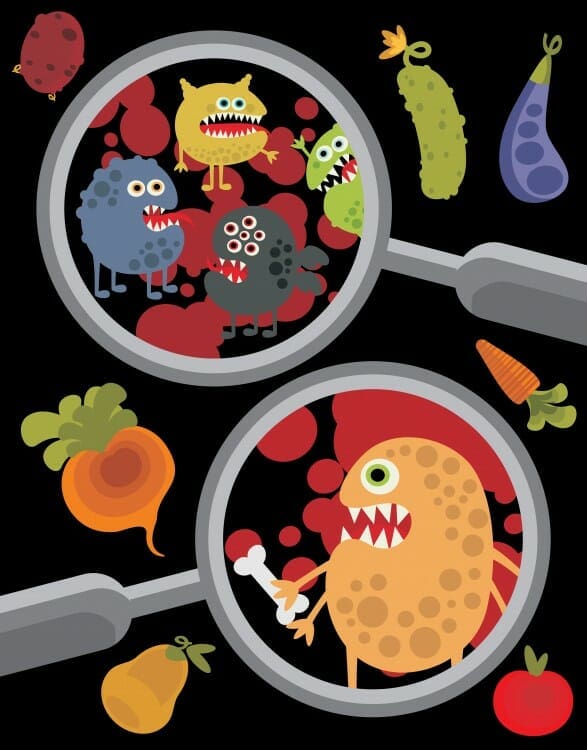 There’s nothing Hollywood loves more than a creepy “home-alone” horror movie, with potential danger lurking behind every corner. In real life, these often-neglected corners of your house could be hiding some very scary surprises.
1. Attic or crawlspace
There’s nothing Hollywood loves more than a creepy “home-alone” horror movie, with potential danger lurking behind every corner. In real life, these often-neglected corners of your house could be hiding some very scary surprises.
1. Attic or crawlspace
These storage spaces can attract real-life creepy crawlies, from pests to mold and mildew, which can damage your home and cause health problems if left unchecked.
You should examine your attic or crawlspace every six months, looking for droppings, nesting materials or other signs of pests. If you find evidence of an infestation, call an exterminator immediately. You should also be on the lookout for dampness or foul odours, which can signal that water is getting in to the house. Be sure to wear a face mask when cleaning the space, especially if you have exposed insulation.
If you’re using the attic or crawlspace to store items, be sure to put them in airtight plastic or rubber containers.
2. Under furniture
Who knows what horrors lurk beneath the Chesterfield? Seriously, though, dust and pet hair accumulating under furniture can be a real nightmare for allergy sufferers.
To clean under furniture on hardwood floors or linoleum, use an extension handle duster (the kind made for sweeping the tops of ceiling fans). Carpeted rooms require a bit more work. If you’re going to move the furniture out, consider giving the whole space a good steam cleaning – will keep you from having to perform this unpleasant chore again for some time.
3. The closet
If I’ve learned anything from horror movies, it’s that closets usually contain one of three things: a monster, an axe murderer or clutter – and most people would rather deal with the first two.
The key to organizing a closet is to divide and conquer. Take everything out of the closet and divide it into three categories: keep, dump or donate. Be ruthless; dump anything that’s damaged and donate anything you haven’t worn in a year or longer, doesn’t fit you or no longer suits your style.
Once your closet is uncluttered, plan to keep it that way: install double rods and shelves to increase your storage capacity, store small items in containers and use the back of the door for a hanging shoe organizer.
4. The Fridge
Scarier than the Blob, a dirty refrigerator is a potential breeding ground for bacteria and food-borne pathogens. And like the Blob, you should tackle this chore before it becomes too big to handle – about once a month.
Clear your shelves, making sure to toss anything that’s spoiled or expired. If possible, remove the shelves and drawers from the fridge. Wipe down the shelves, drawers and the interior with a solution of two tablespoons of baking soda to one quart of hot water (avoid chemical cleaners, which can leave behind a scent that can be absorbed by the food.) You can place a tray of baking soda or cat litter in the fridge to eliminate lingering odours.
Once a season, you should also unplug your fridge and vacuum the coils at the back of the fridge.
5. The Shower
Psycho, anyone? You likely won’t meet a grisly end in the bathroom (as long as you have non-slip mats, of course). But it’s difficult to stay clean when your shower is dirtier than you are.
Over time, your shower head can accumulate mineral deposits that will block the flow of water. To clean your shower head, immerse it in a pot of distilled white vinegar, then heat the pot on medium-low heat and rinse.
Scrub down your shower walls with a mildew-busting solution of 1/2 cup vinegar, 1 cup ammonia, 1/4 baking soda and 3 litres of hot water. Wipe down glass shower doors clean with white vinegar for a crystal clear clean.
Most shower curtains can be tossed in the washing machine; add half a load’s worth of detergent and 1/2 cup of baking soda during the wash cycle, then 1/2 cup of vinegar during the rinse cycle. Hang to dry.

 -There’s also some solid research to suggest house plants can improve air quality in your home. Back in 1989, NASA tested a number of house plants as part of its clean air study, which researched ways to augment air filtration systems in space stations. Certain plants not only removed carbon dioxide and provide oxygen, they also removed harmful chemicals like benzene (found in petrochemicals) and trichloroethylene (used in industrial solvents) from the surrounding environment. Among the top performers were snake plant, pot mum, peace lily, Boston fern and English Ivy. For best results, the NASA study recommends using 15 to 18 good-sized houseplants in six- to eight-inch diameter containers in a 1,800-square-foot house.
–Coffee grinds can do more than help you stay awake – they can also soak up the stink from vomit, urine and other nasty accidents on clothes and upholstery. Place two or three layers of old dryer sheets over a stinky stain, then sprinkle coffee grinds over the sheets. The odour will be absorbed in the grinds overnight.
-There’s also some solid research to suggest house plants can improve air quality in your home. Back in 1989, NASA tested a number of house plants as part of its clean air study, which researched ways to augment air filtration systems in space stations. Certain plants not only removed carbon dioxide and provide oxygen, they also removed harmful chemicals like benzene (found in petrochemicals) and trichloroethylene (used in industrial solvents) from the surrounding environment. Among the top performers were snake plant, pot mum, peace lily, Boston fern and English Ivy. For best results, the NASA study recommends using 15 to 18 good-sized houseplants in six- to eight-inch diameter containers in a 1,800-square-foot house.
–Coffee grinds can do more than help you stay awake – they can also soak up the stink from vomit, urine and other nasty accidents on clothes and upholstery. Place two or three layers of old dryer sheets over a stinky stain, then sprinkle coffee grinds over the sheets. The odour will be absorbed in the grinds overnight.


